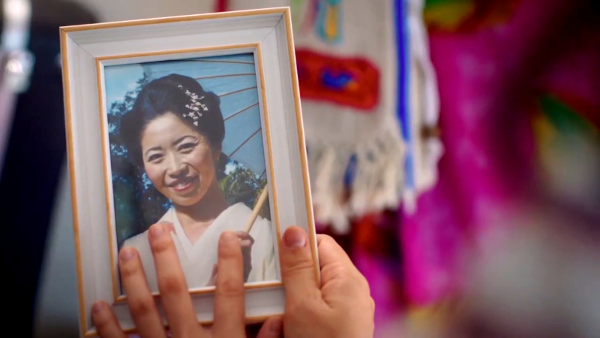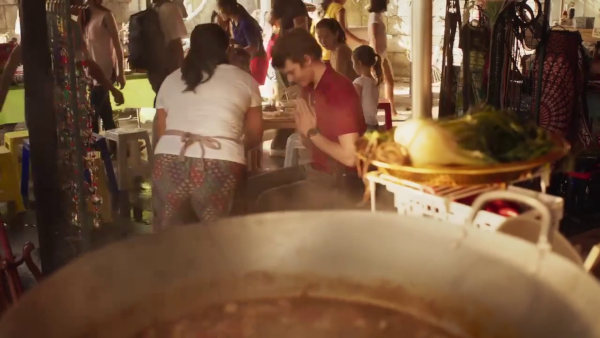Japanese Umbrellas and Thai Manners
Notes on writing audio description.

by Brett Coulstock. .
Recently, I was invited by indie audio describer Kyle Warwick-Mathieu to co-write descriptions for Season 2 of The Bureau of Magical Things.
One of my favourite things about writing audio description is learning about things, or noticing small details that you might miss while watching casually, and then finding exactly the right word or terminology to bring that out.
The Photo of Mitchiko
In Season 2 Episode 1 "Vanished", the main character Kyra (Kimie Tsukakoshi) is unpacking and finds a photo of her dead mother Michiko (Rumi Kikuchi).
This is the cue just before, written by Kyle.
Inside, teenaged Kyra Glen with long dark hair, is surrounded by several moving boxes. She picks up a framed photo of her Japanese mother Michiko.

In the photo, she has a Japanese style umbrella over her shoulder.
Of course, they're not called "Japanese style umbrellas", but that's pretty much the verbatim query I typed into a search-engine, and I discovered they have a better description.
They are oil-paper umbrellas.
I wrote this cue to describe the photo:
A smiling woman with a spray of flowers in her dark hair, an oil-paper umbrella over her shoulder.
According to wikipedia, the oil-paper umbrellas are called wagasa. I omitted this as the umbrella is only a background detail, and not significant to the ongoing story and is extraneous detail.
Darra in Bangkok
In the same episode, Darra (Julian Cullen) finds himself in Bangkok, Thailand. My experience of the country is limited to a few good meals at Thai restaurants, and a short 1 hour stopover at the airport in , so I was alert for any interesting examples of the Thai culture I could bring to the description.
Darra, I noticed makes a courteous and friendly little bow several times. In the following screenshot, he's been served Tom-Yum and he is thanking the chef.

My curiosity was piqued by this small, friendly ritual. Fortunately, search engines are good at ferreting out this kind of cultural detail, especially as Thailand is a popular travel destination and there is a lot of information about the culture and customs for people interested in visiting.
The little bow is called the wai, and there are several degrees of it depending on social context. And the cue I wrote to describe it is:
She guides him to a chair. He performs the Wai [PRN:Why], pressing his palms together and nodding his head.
Now, I did describe and name the ritual/gesture, partly because it's done twice in the episode (and may occur again in future episodes), and because it adds cultural authenticity and establishes the setting beyond a simple establishing shot and background detail.
It's also partly because I'm excited to learn things, and I like sharing. I'm aware, however, that that alone doesn't justify its inclusion. Fortunately, it's also in accord with some of the audio description guidelines available online.
For example, the Netflix Audio Description Style Guide states:
When creating Audio Description for a language other than the original language, determine how known/unknown the setting is outside the original audience and describe accordingly (naming vs explicitation. It is best to name and explicate if time allows, e.g. Tower Bridge - a turreted bridge over the river Thames; He wears a barretina – a red Catalan hat).
The American Council of the Blind's - Audio Description Guidelines and Best Practices () also suggests something similar:
Describe a technical term, then name it, e.g., she bends at the knees, a plié.
Now, onto learning the next thing!